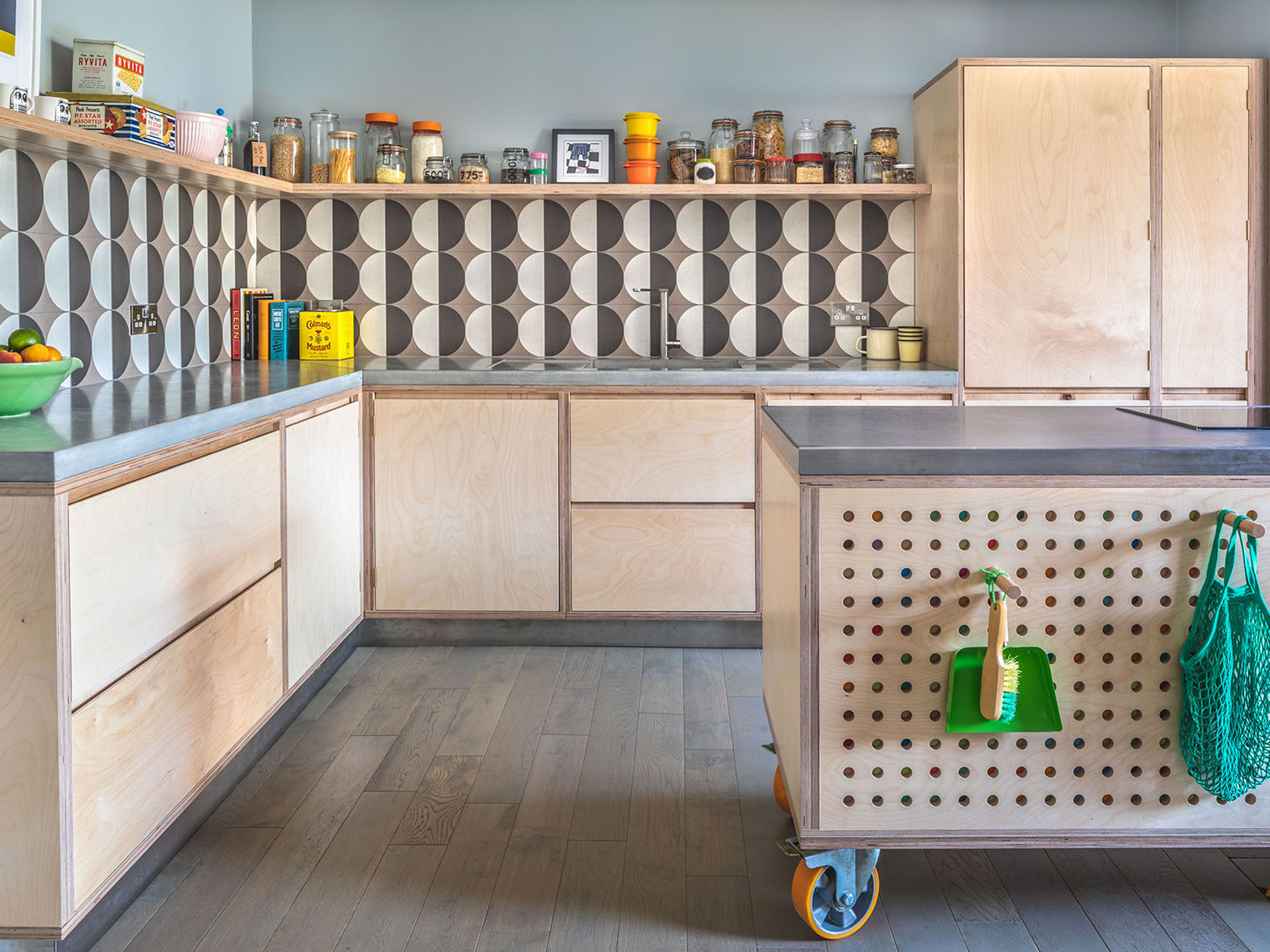
Image credit: Sustainable Kitchens
Perfect plywood: Why ply is hot right now
What is plywood?
Plywood is made from large, very thin slices – veneers – of real wood glued one on top of another. Each veneer is laid at right angles to the one below it, so the grains crisscross. This is called cross lamination and makes the finished product very strong and less likely to split, shrink or warp.
Heat, pressure and special adhesive are used to stick the layers together and build up the plywood to the required thickness. This process gives ply its distinctive layered appearance.
Plywood is lighter than MDF and cheaper than timber. It comes in different quality grades – A is the best, free of knots and other imperfections.
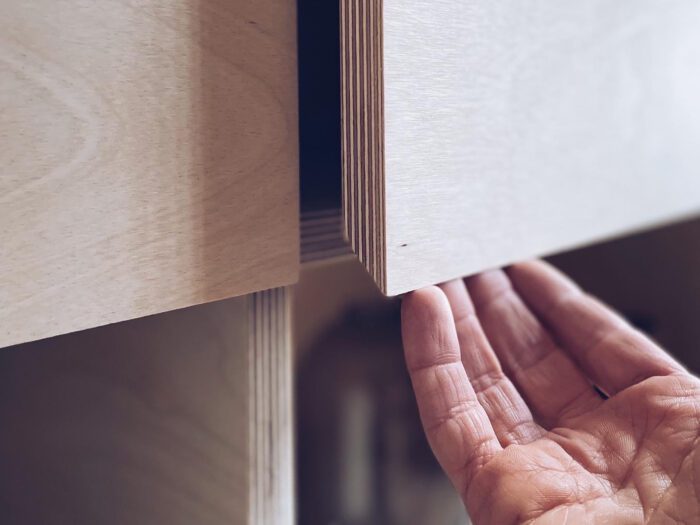
Sustainable choice
Plywood can be a very sustainable product. It is often made from birch, a really fast-growing tree. Providing the trees used to make the plywood are replanted, ply is sustainable. A Forest Stewardship Council (FSC) certificate or similar certification shows that the wood has come from a well managed, sustainable forest. Plus, as long as the wood remains in use, it is storing carbon captured from the atmosphere.
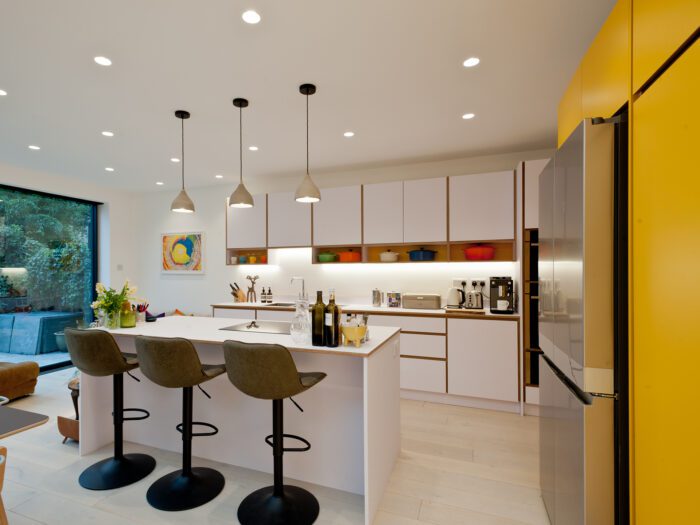
New glue
In the past there were concerns over the toxic fumes given off by the adhesive used to glue the layers of plywood together. It used to be stuck together with a glue containing formaldehyde. But nowadays there are newer formaldehyde-free, non-toxic and solvent-free adhesives. Ply that emits zero or almost zero formaldehyde is categorised as E1 grade.
Story of ply
Although a material made from layers of thin wood stuck together was found as far back as ancient Egypt, plywood as we know it was invented in the 19th Century. It has been used to make everything from planes to skateboards.
In 2017, the V&A Museum ran an exhibition about the history of plywood that featured all kinds of iconic objects made from the wonder wood. This highlighted one of the reasons why ply is in the ascendant at the moment: the development of CNC (computer numerical control) machines, which are perfect for precision cutting plywood.
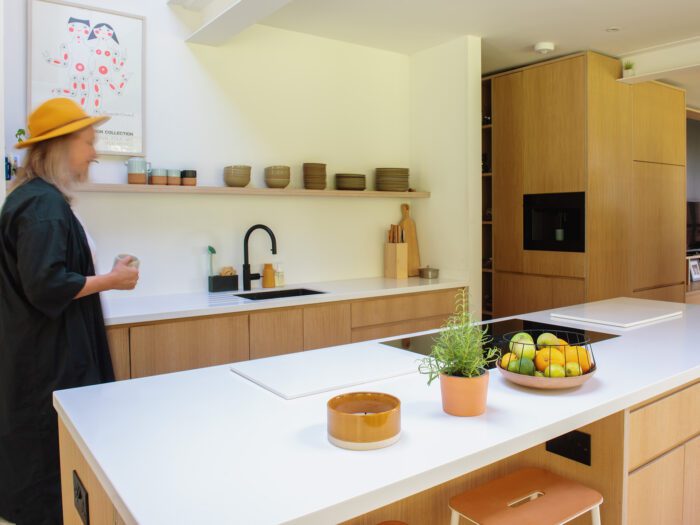
Mid-Century Modern
Plywood really came into its own after the Second World War, when it was taken up by Modernist designers such as Charles and Ray Eames, Alvar Aalto and Hans Wegner, all of whom designed bent plywood chairs that are now celebrated as design classics.
Part of the reason plywood is in fashion now is because we have fallen in love with the stylish minimalism of all things mid-century modern. And ply is a thoroughly mid-century material.
Scandi style
Another key influence we can see in the current love of ply is Scandinavian design, with its minimalism, abundant use of wood and light colours. In fact, you could almost see the ply trend as Designer Ikea (and in some cases, that’s literally what it is).
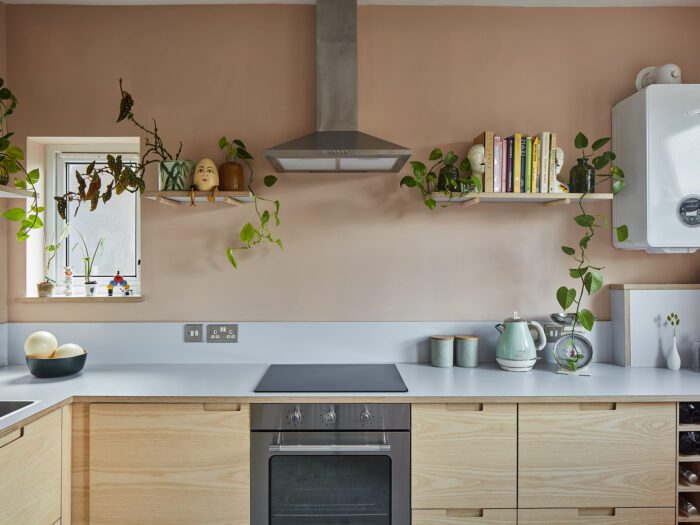
Why ply?
Plywood’s current vogue is also explained by its environmental credentials, which have made it a popular choice in contemporary architecture. It is strong, sustainable and doesn’t need to be hidden or painted over. So it can be used in line with the Modernist maxim of ‘truth to materials’, still favoured by many architects. This means using materials ‘honestly’, i.e. in a way that makes evident how a building has been constructed, and avoids ‘unnecessary’ ornamentation and decoration.
It’s a stricture that jigsaws neatly with the environmental ethos that less is more. There’s something almost puritanical about the simplest of plywood kitchens that suits the spirit of our age.
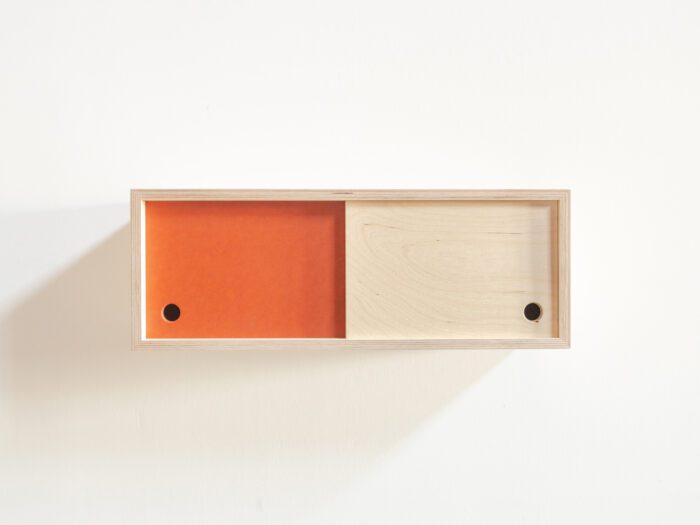
Ply inspiration
Ply inspo #1 The Eames chair: the ultimate mid-century modern plycon.
Ply inspo #2 Le Corbusier’s holiday cabin (cabanon) on the coast in the south of France has the OG ply interior, as you can see in this video. Simple and stunning.
Ply inspo #3 The sky’s the limit for plywood, well, for ply’s big brothers – cross-laminated timber and glue-laminated timber. These are starting to be used in place of steel to build tall residential buildings. The timber products have a much lower carbon footprint than steel and concrete, and although they can’t build as high, ‘plyscrapers’ are having their moment.
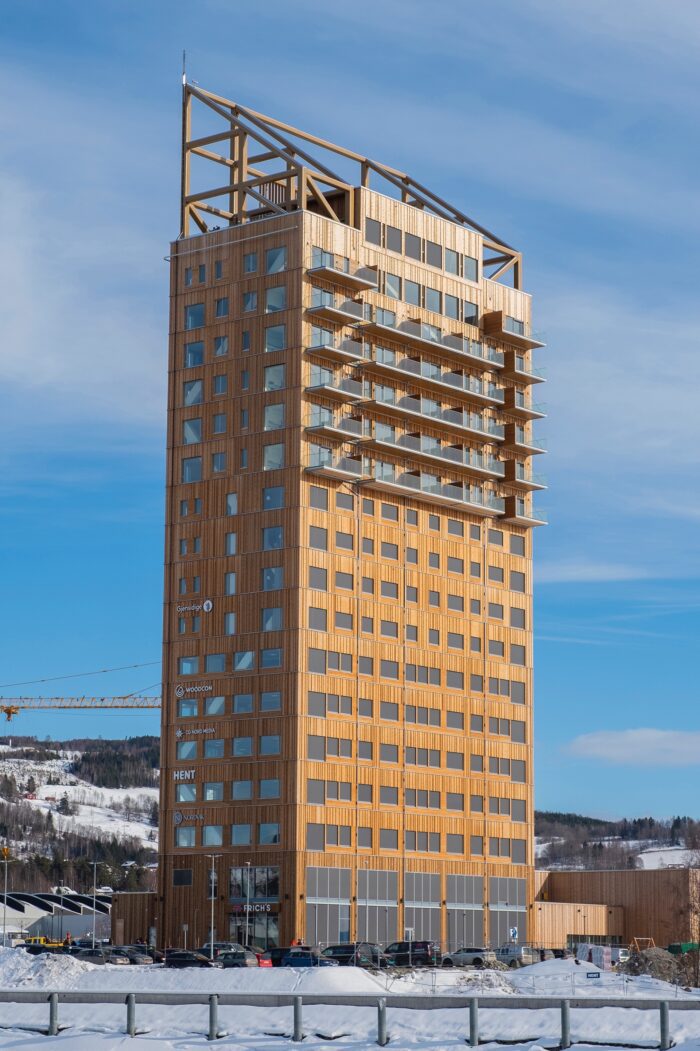
Ply inspo #4 CNC and ply have been put together to great effect in the WikiHouse project. This is an open-source, self-build system of plans for ply sections that can be cut by any CNC machine, then assembled easily and cheaply with simple tools and other basic materials to build low-cost houses.
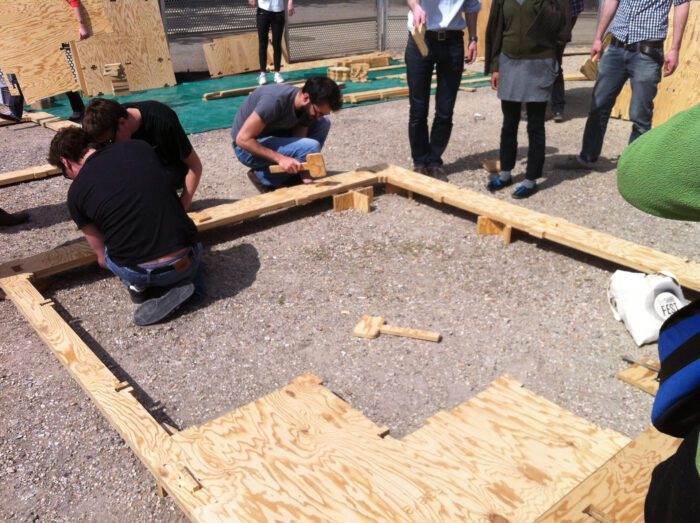
Ply inspo #5 The interiors in this block called The Queen of Catford, designed by Tsuruta Architects, are a wonderful world of ply decorated with cats’ heads.
The Queen of Catford from Tsuruta Architects on Vimeo.
Perfectly plain
A spirit of Modernist simplicity informs the design of fashionable contemporary plywood kitchens, which generally have ultra-minimalist design with simple cut-out handles giving the only detailing.
Ply veneer ticks the biophilia box. It looks beautiful in a simple, timeless way. Usually, it is simply protected with several coats of lacquer, which bring out the grain but also waterproof the wood, and protect it from cracking and yellowing.
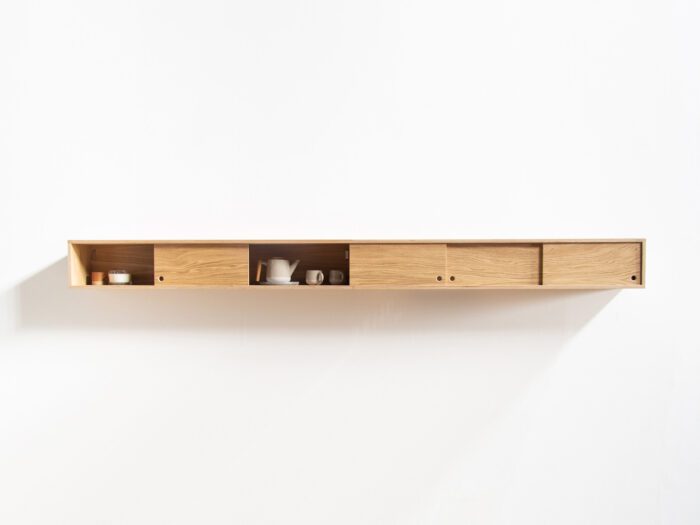
Different species of wood produce different shades of ply veneer. Very pale, almost white, birch is probably the look we are most familiar with. London Plane is quite pale too. Oak, Elm and Douglas fir ply veneer are medium in tone and walnut veneer is a darker brown. Cherry wood is reddish in colour. The different woods have different grain patterns too.
Colourful Formica
And yet, somehow, ply really comes into its own when it is combined with fun, brightly coloured laminates made from Formica or Fenix, a new carbon-neutral laminate.
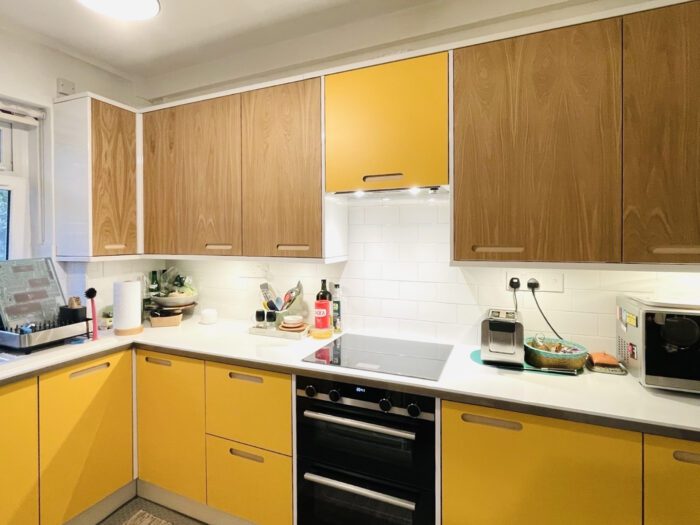
Check out our guide to the best plywood kitchens.




